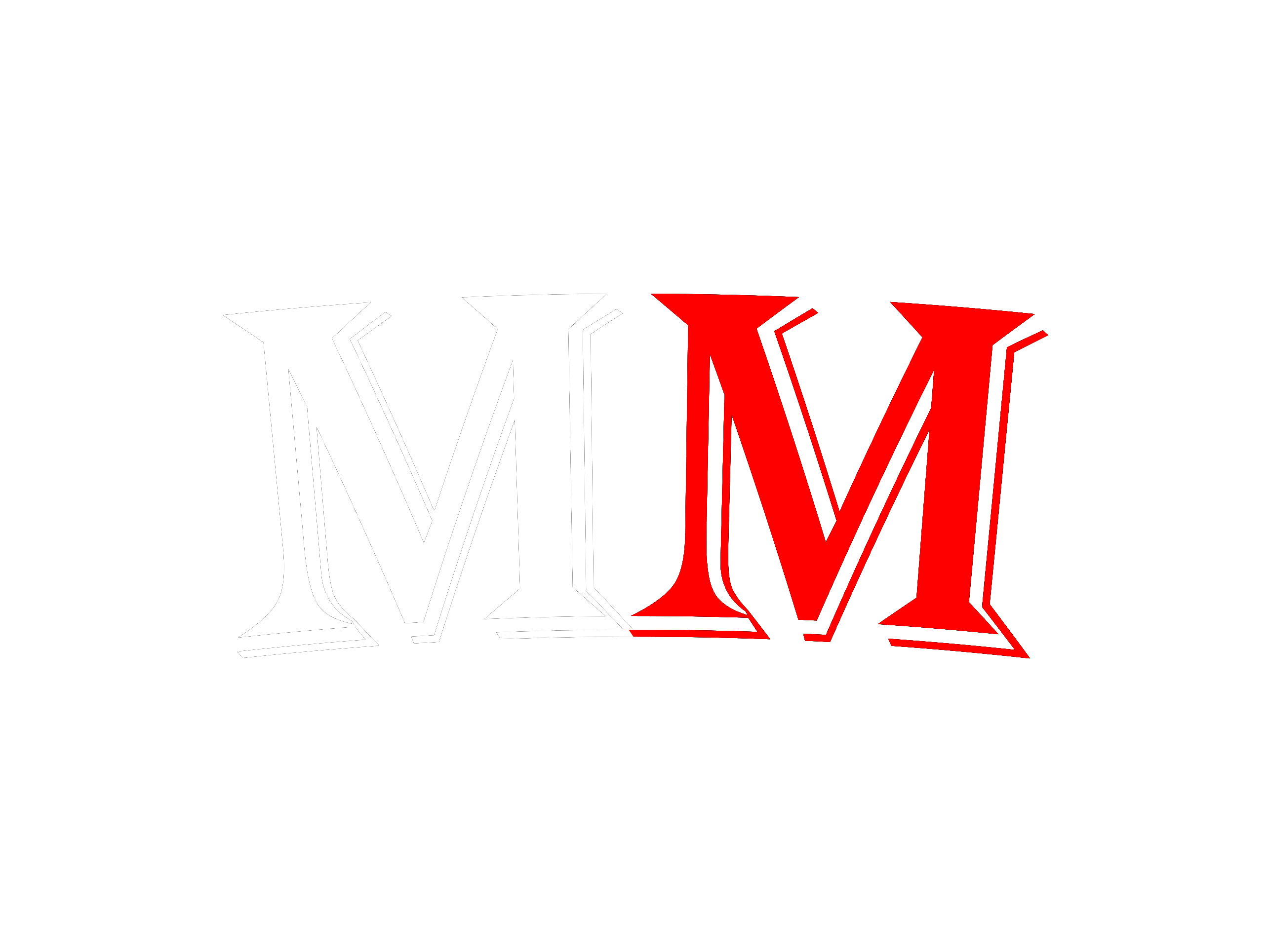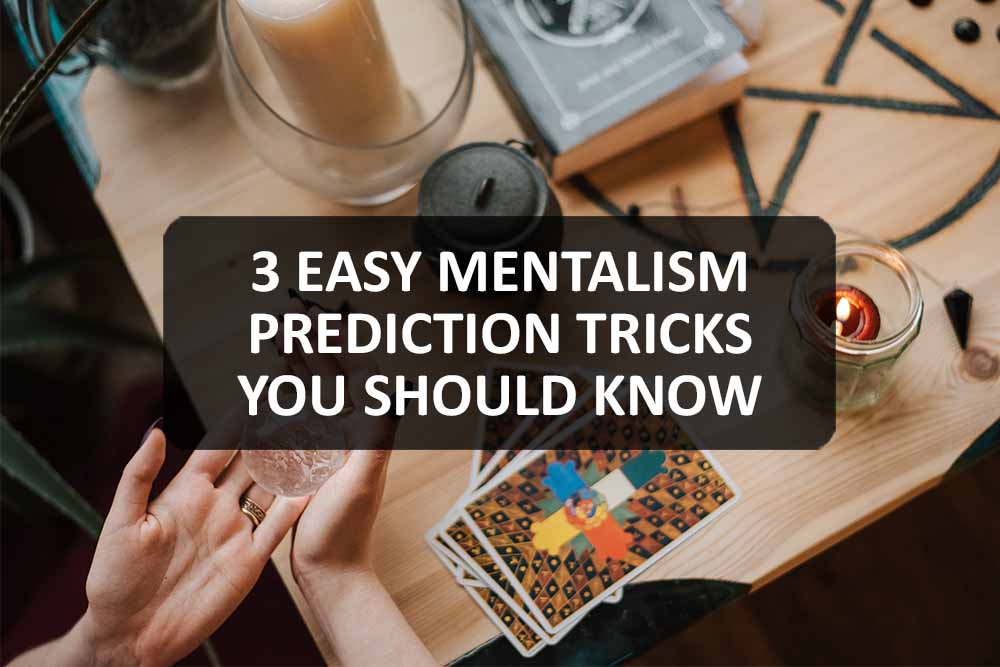When people usually think of someone who can divine the future, they picture a woman with rings on her fingers and heavy bangles around her wrists. She sits in a room with dim lights and a crystal ball sits on the table before her.
But can this woman really tell what the future will bring?
No, she can’t.
Likewise, you can’t predict the future. But you can pretend you CAN with a few mentalism tricks.
Mentalism prediction tricks always guarantee your spectator(s) will be amazed beyond belief.
Now, we’re going to explain 3 easy mentalism prediction tricks you should know. This way, you can impress your friends, family, or even strangers!
So let’s get straight to it!
Prediction Trick #1: Multiple Outs
This prediction trick is different in that it doesn’t involve the use of cards or computations. All you need are three pieces of colored paper and an opaque envelope (a manila envelope works well for this) with a sheet of paper inside.
This trick is one of the easiest to do — what makes it work, however, is how it’s delivered.
What They See
Lay the three pieces of colored paper on the table. Confidently tell your spectator that you know exactly what they’ll do — this is you dangling the bait.
Once you’ve piqued your spectator’s interest, have him choose one of the colored papers on the table. Let’s say he chooses red. Draw out the trick a bit by asking if he’s sure and have him settle on his final choice.
He sticks with red. You then get the envelope and say “I knew it!” When they wonder what that’s about, show them what’s written on your envelope. It says: You will choose red!!!
Remember, it’s not a complex trick, so what makes or breaks it is how you deliver each step.
How to Perform the Trick
This trick is guaranteed to work 100% of the time. The secret? It’s preparing for all possibilities.
It means regardless of the color they choose, you prepared a corresponding prediction. If you use the back of the envelope to predict your spectator choosing red, use the paper inside if they choose green.
If they choose blue, flip the colored paper over and they’ll see another piece stuck on it saying “You will choose blue!”. You have to be careful to only show it if they choose this particular color.
What prediction you reveal depends on what they choose.
Feel free to modify the trick to suit your style. You can substitute the colored paper with playing cards or even different objects. Whatever items you use, the logic behind it remains the same.
Prediction Trick #2: The Sum of Random Numbers
Let’s try a math trick. You will have to do some quick calculations in your mind to make sure it works, but nothing that requires you to have a calculator.
If you’re not the best in math, don’t worry — the secret to doing this trick will be revealed at the end.
What They See
Ask your spectator to write down a random 6-digit number between 000,000 and 999,999 on a piece of paper. Remind him that no two digits should be the same. For example: 276,931.
Using a different sheet, write down a 6-digit number. Fold your paper in half and set it aside for the time being.
Ask your spectator to write another 6-digit number below the first one he wrote. The same parameters apply — it has to be between 000,000 and 999,999 and does not have any repeating digits. Let’s say he chose 167,298 this time.
Below your spectator’s second number, write down a 6-digit number of your own. For our purpose, let’s say you picked 832,701.
For a third time, ask him to write another 6-digit number below yours. Your spectator jots down 431,758. Once done, write another 6-digit number underneath his — let’s do 568,241.
At this point, there should be five 6-digit numbers on the sheet of paper:
- 276,931 — from your spectator
- 167,298 — from your spectator
- 832,701 — from you
- 431,758 — from your spectator
- 568,241 — from you
Hand your spectator a calculator and have him add everything up. In this case, it’s 2,276,929.
Reveal the figure you wrote down earlier — it was after your spectator wrote down his first 6-digit number. Guess what? It’s 2,276,929.
How to Perform the Trick
There are two things to keep in mind when you do this trick.
First, the number you write down depends on the numbers your spectator chooses. Let’s focus on the second and third numbers he wrote. Whatever figures he picks, write a number that, if added to that, makes it 999,999:
| Your Spectator’s Number | Your Number | Total |
| 167,298 | 832,701 | 999,999 |
| 431,758 | 568,241 | 999,999 |
Second, your prediction number is the first 6-digit number added to 1,999,998 (999,999 x 2). There’s a shortcut to do this quickly in your head:
- Add a 2 at the beginning of your prediction number
- Copy the rest of your spectator’s 1st number (it makes it 2,276,931)
- Subtract 7 from the number (2,276,931 – 7 = 2,276,929)
Prediction Trick #3: The Six Trick
Guess how many objects you need with this trick? Six! Well, 6 objects and a mobile phone.
The best part of this act is you don’t need to prepare anything in advance — in fact, you can borrow everything you use and still amaze your audience.
What They See
Start by making small talk with your spectator. Tell her you’re going to do a little counting, a bit of spelling, and then make a prediction.
Emphasize that you have nothing with you, and so you need your spectator to choose six random things around you. As she points them out, line them up on the table.
Once they’re all there, borrow a phone — you can use yours, but it works so much better if even the phone comes from someone in the audience. Turn on the camera and say you’re going to take a picture of the chosen objects.
After taking a shot, set the phone face down to one side and say you’ll come back to that later.
Draw your spectator’s attention back to the items on the table and tell them to choose a number between one and six.
Let’s say she picks four. Before proceeding, ask her if she’s sure — she is. So you’ll work with four.
Count the items off, starting from your right. Tell your spectator you could have chosen any number, but she picked four.
Get the mobile phone and remind everyone you took a picture earlier. Say it was your prediction. Show them the shot, and what do you know? It’s an image of the fourth object!
How to Perform the Trick
For a trick with such a potentially big reveal, it’s surprisingly easy to do. Here are the little tricks of the trade that make for a fantastic performance.
Set up your spectator psychologically. Remember that line in the beginning? “I’m going to do a little counting, a little spelling, and then I’ll make a prediction.” DO NOT forget that line.
You can change it into something that sounds more like you, but make sure you include that bit about spelling.
The secret shot. When you say you’re going to take a picture of your spectator’s selection, only take a picture of the fourth item from your right. No matter what number she chooses, that’s where you’ll end up.
Count with numbers… and letters. It’s why that line, in the beginning, is vital. It sets it up for all eventualities based on your spectator’s choice.
For example, let’s say these are your spectator’s picks, from right to left: a glass, an ashtray, a comb, a tube of lipstick, a wristwatch, a spoon.
Your prediction is going to be the tube of lipstick. Depending on what number your spectator chooses, this is how you’ll count the items off:
| Spectator’s Number | Count With | Example |
| One | Letters(O-N-E) | (from the left): spoon, wristwatch, lipstick |
| Two | Letters(T-W-O) | (from the left): spoon, wristwatch, lipstick |
| Three | Numbers(1-2-3) | (from the left): spoon, wristwatch, lipstick |
| Four | Numbers(1-2-3-4) | (from the right): glass, ashtray, comb, lipstick |
| Five | Letters(F-I-V-E) | (from the right): glass, ashtray, comb, lipstick |
| Six | Letters(S-I-X) | (from the left): spoon, wristwatch, lipstick |
No matter what number your spectator chooses, you’ll always end up with a tube of lipstick! And of course, you already know that.
The Wrap Up
Mentalism prediction tricks don’t have to be complicated.
Prediction tricks typically follow the same sequence. How you deliver your performance, however, significantly impacts your audience’s impression of you.
So stand tall and do it with confidence. But before you step on that stage, don’t forget — practice, practice, practice!

